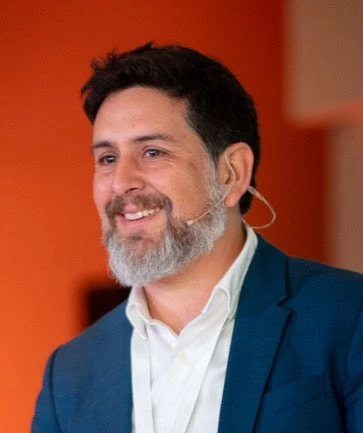Imagine a place where you've lived for decades. Not just you, but your parents’ parents, too. When they lived there, the place wasn't that big. There were just a few dozen families. Today the place is home to hundreds of – or maybe even a thousand – families.
This is a highly fertile, verdant place… You're at the foot of a volcano.
Suddenly, the volcano begins to erupt, just as it did 50 years ago when your grandparents lived there. Unfortunately, the people who stayed behind are killed, all the infrastructure is lost, and your house is under six feet of volcanic sand, mud, and debris. The land is no longer green – rather, a hot sludge.
This is the story of populations living near or on the foothills of volcanoes all over the world, be it in Asia, the Americas, or Africa.
Today, there are 81 countries with active volcanoes and 800 million people living within 60 miles of a volcano. This number is likely to grow as the population near volcanoes grows. For example, I live in Ecuador, where 50 percent of the country's population lives within the 60 mile-radius from a volcano. In Quito, the country’s capital city at the foot of the Pichincha Volcano, the population in 1950 was 200,000. Today, it is more than two million.
Historically, volcanic eruptions have affected millions of people through landslides, lava flows, and other dangers. These hazards, according to the Economic Commission for Latin America and the Caribbean (ECLAC) report, contributed to the June 2018 Fuego volcanic disaster in Guatemala, which affected 1.7 million people and claimed more than 190 lives, with an economic impact of more than $200 million.
So, we have to ask ourselves several questions. Why do people live near volcanoes? Do we really understand the risk of living so close to them? What should we do after a volcanic eruption? Is there any way of reducing the risk of similar consequences happening in the future? What’s our “Plan B” if the volcano erupts?
The Fuego Volcano crisis revealed important challenges in disaster risk management, which could explain the size of the disaster, such as deficiencies in land use planning (LUP), volcanic hazard monitoring and early warning systems, inter-institutional coordination, preparedness and emergency response, and risk communication to communities.
These and many other topics were discussed during the “International Lessons Learned Workshop after the Fuego Volcano Eruption” held in Guatemala City in October 2018. The event, organized by the World Bank and supported by the Global Facility for Disaster Reduction and Recovery (GFDRR), gathered a group of national agencies and international experts from Chile, Colombia, Costa Rica, Ecuador, UK, USA, Italy, and Japan to share their knowledge in the design of a roadmap for strengthening disaster risk management in volcanic areas, with the purpose of reducing losses and damages in future volcanic eruptions.
Main recommendations included:
- Develop a specific land-use regulation in areas at volcanic risk;
- Implement an institutional strengthening program for the Guatemalan National Institute of Seismology, Volcanology, Meteorology and Hydrology (INSIVUMEH);
- Make available sufficient contingent resources for disaster response, based on identified risk scenarios;
- Strengthen the governance of disaster risk management through modernizing the legal framework and improving the processes of coordinating emergency operations; and
- Design a communication strategy along with communities settled in volcanic zones, taking their cultural and social characteristics into consideration.
Understanding the risks and taking prompt action are essential for addressing volcanic hazards. This is the main reason why the World Bank has decided to create a community of practice to specifically address the issue of volcanic risk at the global level – with the goal of advising and informing the development and implementation of public policies, projects, and activities for communities’ safety.
It is vital that governments, cities, and populations living at the foot of a volcano become aware of the risks they face, and that they take the necessary measures not to create further risks – through specific action plans for volcanic hazards. Learning to understand and coexist with risk can provide a sustainable development and even inspire creative ways to educate the public on volcanic risks. With the launch of this community of practice, we hope to contribute to the establishment of a strong “Plan V.”
READ MORE:
- Video blog: How stories can help communicate volcanic risk to communities
- Blog post: Communicating volcanic risk: lava, eruptions and uncertainty
- Subscribe to our Sustainable Communities newsletter
- Follow @WBG_Cities on Twitter




Join the Conversation